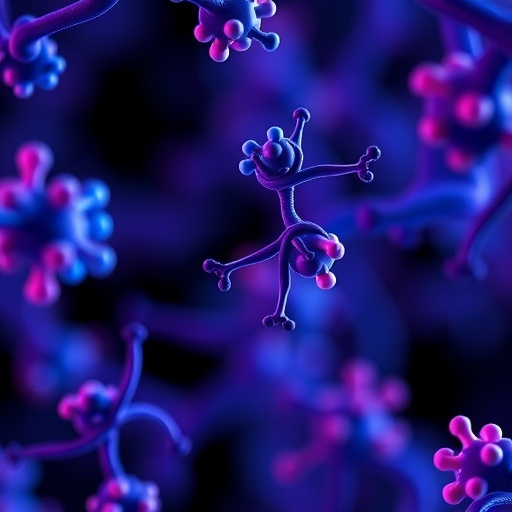In a groundbreaking study published in Nature Machine Intelligence, researchers have highlighted the crucial role of negative training data in predicting antibody binding. This revelation signifies a paradigm shift in computational biology, particularly in the rapidly advancing field of antibody engineering. As therapeutic antibodies continue to play an ever-increasing role in modern medicine, it becomes imperative to optimize their binding predictions. Until now, most predictive models have primarily focused on positive training data; however, Ta and Stokes affirm that incorporating negative training examples into these models offers a substantial advantage.
The journey into the intricacies of antibody binding prediction unveils the complex nature of protein interactions. Antibodies, which serve as the body’s natural defense mechanism against pathogens, leverage their unique structures to bind specifically to antigens. The prediction of this binding affinity has traditionally relied on machine learning algorithms trained on datasets that emphasize successful binding interactions. However, the inclusion of negative data—instances where binding does not occur—changes the game. By providing a broader context, negative samples sharpen the algorithms’ discrimination capabilities.
In their study, Ta and Stokes implemented novel methodologies that integrated negative training data into existing predictive frameworks. They noted that conventional models often struggle with false positives, leading to an overestimation of binding affinities. By incorporating scenarios in which binding fails, the models were refined to discern more accurately what constitutes strong versus weak antibody-antigen interactions. Through rigorous testing, their findings demonstrated that models enhanced with negative training data achieved significantly better performance metrics, outpacing their predecessors.
The implications of this research extend far beyond theoretical models. In practical applications, the ability to predict antibody efficacy is critical in the design of new therapeutics. Researchers and pharmaceutical companies invest countless resources into developing antibodies, yet many candidates fail in clinical trials due to suboptimal binding predictions. By embracing a comprehensive dataset that includes negative examples, the predictive models can help in filtering out candidates that are unlikely to succeed at later stages of development, thereby optimizing time and resource allocation.
Moreover, the integration of negative training data does not merely improve accuracy; it also provides insights into the mechanisms of antibody-antigen interactions. Understanding why certain antibodies fail to bind can be equally enlightening as knowing why others succeed. This knowledge paves the way for more targeted interventions in drug design, as researchers can better tailor antibodies to enhance binding affinity and specificity by modifying their structures based on insights gained from negative instances.
Incorporating negative training data could also spur innovation in machine learning algorithms themselves. The techniques employed by Ta and Stokes may inspire a wave of innovative algorithms designed to incorporate diverse datasets more effectively. The broadened scope of training that includes both positive and negative examples not only challenges existing paradigms in machine learning but also encourages the exploration of hybrid models that leverage the strengths of multiple approaches.
Furthermore, the findings from this research have implications for various domains within biological research. For instance, as scientists strive to develop multi-specific antibodies or bispecific T-cell engagers, the nuances of complex interactions become increasingly pertinent. The ability to account for potentially unfavorable binding scenarios can lead to the design of more robust molecules tailored to target multiple antigens. This can be particularly transformative for treating diseases such as cancer, where precision in targeting can have profound effects on therapeutic outcomes.
The study also emphasizes the importance of data integrity in biopharmaceutical research. In an era inundated with information, distinguishing between high-quality data and noise is paramount. By refining data selection processes and stressing the significance of both positive and negative training samples, researchers can bolster the fidelity of their predictive models. The reliability of these models directly correlates to the safety and efficacy of the therapeutic antibodies developed from them.
From a broader perspective, this research can inspire collaborative efforts among biologists, data scientists, and machine learning experts. The merging of disciplines has the potential to drive innovative solutions to complex problems in drug discovery. By pooling knowledge and expertise, interdisciplinary teams can cultivate new methodologies that are more equipped to address the challenges posed by the vast data landscape within biological research.
As the field of antibody engineering continues to evolve, the importance of continuously refining predictive models cannot be overstated. The insights garnered from the incorporation of negative training data represent a critical step forward in this endeavor. Not only does it enhance predictive capabilities, but it also aligns with the overarching trend of moving towards precision medicine, where treatments can be customized based on individual patient needs.
Ta and Stokes’ findings signal a new era in antibody binding prediction—a future where models are both accurate and comprehensive. This research undoubtedly paves the way for significant advancements in therapeutic interventions, which may one day lead to more effective treatments for a multitude of diseases. As the scientific community continues to build on these insights, the expectation for transformative breakthroughs in drug design and efficacy will only grow.
The implications of this research extend not only into theoretical constructs but into the very fabric of biomedicine. The shift towards incorporating negative training data serves as a reminder of the nuances inherent in biological systems and the necessity for models that can navigate such complexities effectively. As we embrace this shift, we lay the foundation for enhanced methodologies that promise to push the boundaries of what is possible in therapeutic development.
In summary, the incorporation of negative training data in antibody binding prediction is not just a methodological tweak; it represents a fundamental advancement in our understanding and capability in the complex interplay of biological interactions. As research progresses and these methodologies are adopted and refined, we stand to benefit from refined therapies that deliver on the promise of precision medicine, ultimately enhancing patient outcomes and therapeutic success rates.
Subject of Research: The incorporation of negative training data into antibody binding prediction models.
Article Title: The importance of negative training data for robust antibody binding prediction.
Article References:
Ta, W., Stokes, J.M. The importance of negative training data for robust antibody binding prediction.
Nat Mach Intell 7, 1192–1194 (2025). https://doi.org/10.1038/s42256-025-01080-0
Image Credits: AI Generated
DOI: 10.1038/s42256-025-01080-0
Keywords: Antibody binding prediction, negative training data, computational biology, machine learning, therapeutic antibodies.
Tags: computational biology advancementsenhancing algorithms with negative examplesincorporating negative data in predictive modelsmethodologies for antibody binding predictionnegative training data in antibody predictionoptimizing antibody binding predictionsparadigm shift in antibody engineeringprotein interactions and binding affinityreducing false positives in antibody predictionsrole of negative samples in machine learningsignificance of negative training data in machine learningtherapeutic antibodies in modern medicine






